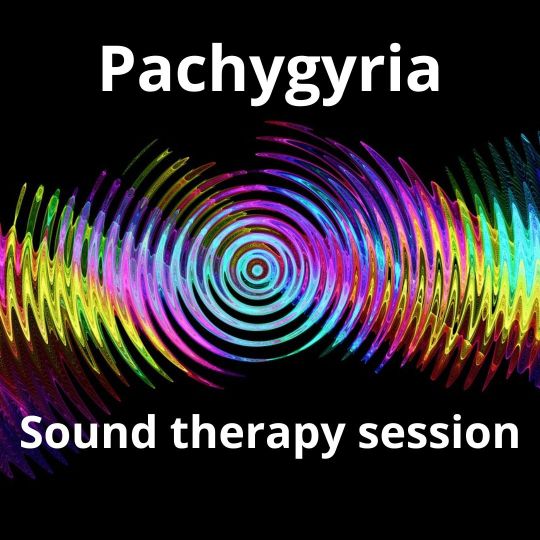#BrainDisorders
Explore tagged Tumblr posts
Text
Tremors & Neurological Disorders , including Kampavata, are interconnected conditions that affect the nervous system, leading to involuntary movements and various neurological symptoms. Understanding their causes, symptoms, and treatment options is crucial for effective management and improving quality of life.

#NervousSystemDisorders#BrainFunction#NeuroRehab#BrainDisorders#MovementDisorders#BrainHealth#NeuroHealth
0 notes
Text
Understanding Cerebral Atrophy: Causes, Symptoms, and Treatment
Description: Cerebral atrophy refers to the progressive loss of brain cells, leading to a decline in cognitive and motor functions. It can result from aging, neurodegenerative diseases, or brain injuries. If you or a loved one is experiencing symptoms of cerebral atrophy, consult Dr. Pranjal Pandey, the best neurosurgeon in Delhi NCR, for expert diagnosis and treatment.
#CerebralAtrophy#BrainHealth#Neuroscience#Neurology#DrPranjalPandey#NeurosurgeonDelhi#BrainDisorders#CognitiveDecline#NeuroTreatment#BestNeurosurgeon
0 notes
Text

🧠 Cannabidiol (CBD) and Alzheimer's Disease: Promising Insights 🧠 --- Alzheimer’s disease (AD) stands as the most prevalent neuropsychiatric disorder among the elderly, affecting over 50 million people worldwide. Traditional treatments, like cholinesterase inhibitors and memantine, provide limited relief. Recently, there has been growing interest in the potential use of Cannabidiol (CBD) for managing AD symptoms. --- Key Insights: CBD's Potential: Pre-clinical and in vitro studies suggest that CBD can mitigate cognitive decline and neurodegeneration by reducing oxidative stress and neuroinflammation. Additionally, CBD shows promise in promoting neuroplasticity, especially in the hippocampus. --- Mechanisms: CBD may exert its beneficial effects by modulating the endocannabinoid system and activating anti-inflammatory pathways. --- Clinical Evidence: Although pre-clinical findings are encouraging, clinical evidence remains limited. Ongoing trials aim to evaluate CBD's efficacy in improving quality of life and reducing psychiatric symptoms in AD patients. --- Need for Research: More well-designed clinical trials are essential to confirm the therapeutic potential of CBD and establish its role in comparison to conventional treatments. --- The potential of CBD as a therapeutic strategy for Alzheimer's is compelling, but robust clinical trials are imperative to validate its effectiveness. The journey towards finding better treatments for AD continues, and CBD offers a promising avenue worth exploring. --- Marques, B. L., & Campos, A. C. (2024). Chapter Six - Cannabidiol and Alzheimer’s disease. In E. Del-Bel, F. V. Gomes, & S. F. Lisboa (Eds.), International Review of Neurobiology (Vol. 177, pp. 121-134). Academic Press. https://doi.org/10.1016/bs.irn.2024.04.014
#AlzheimersDisease#Cannabidiol#CBD#Neuroprotection#CognitiveFunction#HealthResearch#Neuroscience#InnovativeTherapies#BrainHealth#ADTreatment#DementiaResearch#MedicalResearch#ClinicalTrials#Neurodegeneration#MemoryCare#BrainWellness#HealthyAging#ScientificResearch#MentalHealth#BrainDisorders#Neuroinflammation#OxidativeStress#Neuroplasticity#CognitiveHealth#ResearchAndDevelopment
0 notes
Text
New Hope for Alzheimer's Treatment
This week I am talking to Michael Racke, MD Medical Director of Neurology at Quest Diagnostics. Michael is a board-certified neurologist and formerly editor-in-chief of the Journal of Neuroimmunology, an expert in dementia and brain disorders who has authored/co-authored 200 peer-reviewed studies, book chapters, and reviews on neuroimmunologic diseases, including dementia. Michael discusses…

View On WordPress
#alzheimer#AlzheimerAdvancements#AlzheimerResearch#amyloid#amyloid plaque#AmyloidRemoval#BiomarkerBreakthroughs#biomarkers#brain#BrainDisorders#BrainHealth#ClinicalTrials#CognitiveDecline#CognitiveExercise#Communication#DementiaExpert#DiagnosisOptions#Disease#HealthcareTalk#HopeForAlzheimers#ImagingInnovation#Incremental#Incremental Healthcare#IncrementalHealth#LifestyleMeasures#MedicalInnovations#MichaelRackeMD#Neurodegeneration#Neuroimmunology#neurology
0 notes
Text
Creutzfeldt Jakob Disease in 2025 Cases Risks and Insights
In fast-changing 2025 global health there’s that one brain disease that confounded physicians and scientists—Creutzfeldt Jakok disease. Always fatal and rare, the long-term brain disorder confounded scientists decade after decade with its unconventional presentation, brevity of life, and tendency to evade delivery of a triumph-inducing cure. With the increasing refinement of surveillance a hallmark that takes hold in neurology there is understanding of mystifying affliction.
1 note
·
View note
Video
Disorders of the Brain A Guide to Mental eBook
#youtube#disorders of the braindisorders of brain functiondiseases of the braindisorders of gut brain interactionbrain disordersbrain disorders and d
0 notes
Text
Pachygyria_Sound therapy session_Sounds of nature

Pachygyria, a rare brain disorder characterized by abnormal brain development and thickened folds in the cerebral cortex, presents unique challenges for patients and their families. While traditional medicine offers important treatment options, the integration of complementary therapies, such as resonant frequency sound therapy, can provide additional benefits.
Pachygyria affects brain development, leading to cognitive and neurological impairments. The condition can cause seizures, developmental delays, and motor dysfunction. Traditional treatment options for Pachygyria often involve a combination of medications, physical therapy, and supportive care to manage symptoms and optimize the individual's functioning.
Resonant frequency sound therapy utilizes specific sound frequencies to stimulate the brain and nervous system. By delivering targeted vibrations, this therapy can potentially enhance neural connections, promoting neuroplasticity and supporting the brain's ability to adapt and develop alternative pathways.
Pachygyria can be emotionally challenging for both patients and their families. Resonant frequency sound therapy induces a state of deep relaxation, reducing stress and anxiety associated with the condition. This can contribute to an overall sense of well-being and improved quality of life for individuals with Pachygyria.
Resonant frequency sound therapy has the potential to improve cognitive function by promoting brain activation and increasing focus and attention. This therapy may support individuals with Pachygyria in their learning, memory, and cognitive processing abilities, enhancing their overall cognitive functioning.
Seizures are a common feature of Pachygyria. Resonant frequency sound therapy can be integrated as a complementary approach to support seizure management. By promoting relaxation and reducing stress, this therapy may contribute to a reduction in seizure frequency or intensity, although it should be used in conjunction with any prescribed antiepileptic medications.
Resonant frequency sound therapy offers a holistic approach to treating Pachygyria, addressing the physical, emotional, and cognitive aspects of the condition. When combined with traditional medicine, this integrative approach provides a comprehensive treatment plan that considers the individual as a whole.
Resonant frequency sound therapy holds promise as a complementary treatment for individuals with Pachygyria, alongside traditional medicine. By stimulating the brain, promoting relaxation, enhancing cognitive functioning, and providing holistic support, this therapy can offer additional benefits to those affected by this complex neurological condition. Integrating resonant frequency sound therapy into the treatment plan for Pachygyria can contribute to a more comprehensive approach to care, improving the well-being and quality of life of individuals living with this condition.
TO ACHIEVE A POSITIVE RESULT, DAILY LISTENING TO VIDEOS IS REQUIRED.
I wish you health and prosperity!
#ResonantFrequencySoundTherapy#Pachygyria#ComplementaryTreatment#TraditionalMedicine#BrainDisorder#NeurodevelopmentalCondition#TreatmentOptions#SoundTherapy#IntegrativeApproach#holistichealing
0 notes
Text

Track 22: Neuropharmacology CALL FOR ABSTRACTS: - "Step Into the Limelight – Submit Your Abstract Now! “Don’t Miss the 17th Global Digital Pharma, Clinical Trials & Drug Delivery Conference Dubai, UAE & Virtual | Dec 17–19, 2025 Present your latest research on CNS pharmacology, neurotherapeutics, and innovations in brain health to a worldwide audience of scientists, clinicians, and industry leaders. Submit Abstract: https://pharmacy.utilitarianconferences.com/submit-abstract Abstract Submission Deadline Is June 30, 2025 📲 WhatsApp: https://wa.me/+971551792927 #PHARMAUCG #Neuropharmacology #BrainHealth #NeuroScience #DrugDiscovery #PharmaInnovation #NeuroResearch #CNSDisorders #MentalHealthMatters #NeuroDrugs #NeurologyUpdates #Pharmacology #BrainDisorders #Neurotherapeutics #ClinicalResearch #CNSPharmacology
0 notes
Video
youtube
Inside the Brain: Alzheimer's Secrets#sciencefather #neuroscience #cogni...
Dive deep into the human brain to uncover the crucial role of neuropathology in advancing our understanding of Alzheimer’s disease. From the microscopic buildup of amyloid plaques and tau tangles to the deterioration of neuronal networks, this exploration sheds light on how neuropathological research is unraveling the complexities of memory loss, cognitive decline, and neurodegeneration. Discover how cutting-edge diagnostic techniques, brain imaging, and post-mortem studies are guiding the future of early detection, preventive strategies, and therapeutic development in Alzheimer’s care. #AlzheimersResearch, #Neuropathology, #BrainHealth, #Neurodegeneration, #CognitiveDecline, #AmyloidPlaques, #TauProtein, #Neuroscience, #MemoryLoss, #DementiaAwareness, #BrainScience, #AlzheimersAwareness, #Neurobiology, #BrainDisorders, #Neurodiagnostics, #Neuroimaging, #MentalHealthResearch, #AgingBrain, #NeurologicalDisorders, #PathologyInsights, #Neuroresearch, #BrainAtrophy, #Neuroinflammation, #EarlyDetection, #Neurotherapeutics, #SynapseLoss, #Neurobiomarkers, #BrainPathology, #CNSDisorders, #NeurodegenerativeDiseases __________________________________________________________________________________________________________________
MoreInfo:
Websiten link: https://neuroscientists.net/
Contact: [email protected]
Nomination link: https://neuroscientists.net/award-nomination/?ecategory=Awards&rcategory=Awardee ________________________________________________________________________________________________________________
Socialmedia:
Youtube: https://www.youtube.com/channel/UCZ9RPAjr0vKVJ91LUi4o4ig
Twitter: https://x.com/ScientistsNeuro
Pininterest: https://in.pinterest.com/neuroscientistsawards/
Linked in: https://www.linkedin.com/feed/
Instagram link: https://www.instagram.com/laramaria3040/
blogger:https://www.blogger.com/blog/posts/4217723762166
0 notes
Video
youtube
He Didn’t Recognize His Wife – True Neurological Cases That Break Reality
What if one day… your brain stopped recognizing the people you love most? This video dives deep into the incredible true stories documented by neurologist Oliver Sacks — stories of people whose minds fractured in ways science can barely explain. From a man who mistook his wife for a hat… To a woman who couldn’t feel her body… To a sailor stuck in 1945, forever reliving the same day… These are not sci-fi tales. These are real cases, backed by science — and they’ll change the way you think about your own mind. 🧠 Explore the fragile boundary between perception, memory, and reality. 📚 Based on The Man Who Mistook His Wife for a Hat by Oliver Sacks. 👉 Watch until the end — and tell us: What do YOU believe defines reality? 🔔 Like, Subscribe, and Comment to join the Curiosity AI community. New videos every week. 📌 Related video: "The Mother Who Never Gave Up" https://youtu.be/3AuuZT_PtSk 🔖 Hashtags #curiosityai #neurology #OliverSacks #mindblown #psychologyfacts #humanbrain #truestories #medicalmystery #braindisorders #scienceexplained
0 notes
Text

Feeling the pain of headaches or migraines? Find relief and expert care at CNC Victoria. Our team is dedicated to helping you manage and overcome these debilitating conditions. Don't suffer in silence, reach out to us today!
For More info please Visit our Site:- https://cncvictoria.com.au/
#HeadacheRelief #MigraineTreatment #CNCVictoria #Neurologist #Melbourne #BrainHealth #NeurologicalCare #Expertise #Healthcare #Wellness #Neuroscience #CuttingEdgeTreatment #CompassionateCare #Innovation #BrainDisorders #NeuroConditions #Consultations #SecondOpinions #PatientCare #MedicalExcellence #NeurologicalWellbeing #HealthAndWellness #TakeChargeOfYourHealth
0 notes
Video
RFK Jr.'s Struggle with Rare Brain Disorder #RFKJr #BrainDisorder #RareD...
#youtube#RFKJr BrainHealth HealthAwareness AdvocacyForChange ChronicIllness RareDiseases HealthStruggles RFKJrStory MentalHealthAwareness ChronicCond
0 notes
Photo

Can Stem cell Therapy Help With #Stroke Recovery?
To know more about Stroke visit https://www.viezec.com
1 note
·
View note
Photo

Latest Treatment For #MotorNeuronDisorder?
To know more about Motor Neuron Disease visit, www.globalstemcellcare.com.
1 note
·
View note
Video
tumblr
Neurovascular surgery is a subspecialty of neurosurgery that aims to treat and manage almost all vascular dieases and disorders of the brain and spinal cord.
Contact for more information:-
• Phone: +91 9810324401
• Website :- www.thebrainandspine.com
#thebrainandspine#brainandspine#brainandspineppl#neurosurgeon#brainhealth#spinalinjury#vascularhealth#neurosurgery#braindisorders#spinalcord#strokeprevention#brainaneurysm#neurointervention#neurorehabilitation#braintrauma#neurocriticalcare#spinalcordinjury#neurologist#brainresearch#neuroscience
1 note
·
View note
Text
Neuro Chip can identify and suppress symptoms of various neurological disorders.

Neuro Chip can identify and suppress symptoms of various neurological disorders. EPFL researchers have combined low-power chip design, machine learning algorithms, and soft implantable electrodes to produce a neural interface that can identify and suppress symptoms of various neurological disorders. Mahsa Shoaran of the Integrated Neurotechnologies Laboratory in the School of Engineering collaborated with Stéphanie Lacour in the Laboratory for Soft Bioelectronic Interfaces to develop NeuralTree: a closed-loop neuromodulation system-on-chip that can detect and alleviate disease symptoms. Thanks to a 256-channel high-resolution sensing array and an energy-efficient machine learning processor, the system can extract and classify a broad set of biomarkers from real patient data and animal models of disease in-vivo, leading to a high degree of accuracy in symptom prediction. “NeuralTree benefits from the accuracy of a neural network and the hardware efficiency of a decision tree algorithm,” Shoaran says. “It’s the first time we’ve been able to integrate such a complex, yet energy-efficient neural interface for binary classification tasks, such as seizure or tremor detection, as well as multi-class tasks such as finger movement classification for neuroprosthetic applications.” “NeuralTree benefits from the accuracy of a neural network and the hardware efficiency of a decision tree algorithm,” Shoaran says. “It’s the first time we’ve been able to integrate such a complex, yet energy-efficient neural interface for binary classification tasks, such as seizure or tremor detection, as well as multi-class tasks such as finger movement classification for neuroprosthetic applications.”
Efficiency, scalability, and versatility
NeuralTree functions by extracting neural biomarkers – patterns of electrical signals known to be associated with certain neurological disorders – from brain waves. It then classifies the signals and indicates whether they herald an impending epileptic seizure or Parkinsonian tremor, for example. If a symptom is detected, a neurostimulator – also located on the chip – is activated, sending an electrical pulse to block it. Shoaran explains that NeuralTree’s unique design gives the system an unprecedented degree of efficiency and versatility compared to the state-of-the-art. The chip boasts 256 input channels, compared to 32 for previous machine-learning-embedded devices, allowing more high-resolution data to be processed on the implant. The chip’s area-efficient design means that it is also extremely small (3.48mm2), giving it great potential for scalability to more channels. The integration of an ‘energy-aware’ learning algorithm – which penalizes features that consume a lot of power – also makes NeuralTree highly energy efficient. In addition to these advantages, the system can detect a broader range of symptoms than other devices, which until now have focused primarily on epileptic seizure detection. The chip’s machine learning algorithm was trained on datasets from both epilepsy and Parkinson’s disease patients, and accurately classified pre-recorded neural signals from both categories. “To the best of our knowledge, this is the first demonstration of Parkinsonian tremor detection with an on-chip classifier,” Shoaran says.
Self-updating algorithms
Shoaran is passionate about making neural interfaces more intelligent to enable more effective disease control, and she is already looking ahead to further innovations. “Eventually, we can use neural interfaces for many different disorders, and we need algorithmic ideas and advances in chip design to make this happen. This work is very interdisciplinary, and so it also requires collaborating with labs like the Laboratory for Soft Bioelectronic Interfaces, which can develop state-of-the-art neural electrodes, or labs with access to high-quality patient data.” As a next step, she is interested in enabling on-chip algorithmic updates to keep up with the evolution of neural signals. “Neural signals change, and so over time the performance of a neural interface will decline. We are always trying to make algorithms more accurate and reliable, and one way to do that would be to enable on-chip updates, or algorithms that can update themselves.” ERC Starting Grant 2021, funded by the Swiss State Secretariat for Education, Research and Innovation.
References
U. Shin, C. Ding, B. Zhu, Y. Vyza, A. Trouillet, E. C. M. Revol, S. P. Lacour, M. Shoaran, "NeuralTree: A 256-Channel 0.227-μJ/Class Versatile Neural Activity Classification and Closed-Loop Neuromodulation SoC," in IEEE Journal of Solid-State Circuits (JSSC), vol. 57, no. 11, pp. 3243-3257, Nov. 2022, doi: 10.1109/JSSC.2022.3204508. U. Shin, L. Somappa, C. Ding, B. Zhu, Y. Vyza, A. Trouillet, S. P. Lacour, M. Shoaran, “A 256- Channel 0.227μJ/class Versatile Brain Activity Classification and Closed-Loop Neuromodulation SoC with 0.004mm2-1.51μW/channel Fast-Settling Highly Multiplexed Mixed-Signal Front-End" in IEEE International Solid-State Circuits Conference (ISSCC), 2022, doi: 10.1109/ISSCC42614.2022.9731776. Source: EPFL Read the full article
#Brain#braindisorders#chip#Health#healthtech#healthtechnews#machinelearning#medtech#medtechnews#neurology#technology
1 note
·
View note